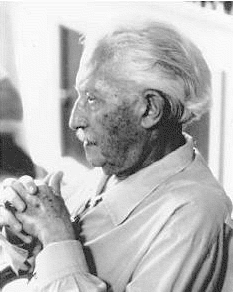Theories of Human Development
Introduction
This section will focus on Sigmund Freud’s structural model of personality and the stages of his psychosexual theory of development and Erik Erikson’s psychosocial theory.
Sigmund Freud’s theory of psychosexual development is based on the idea that parents play a crucial role in managing their children’s sexual and aggressive drives during the first few years of life to foster their proper development. The term psychosexual is referring to or relating to the psychological aspect and aspects of sexuality. Freud’s structural model posits that personality consists of three interworking parts: the id, the ego, and the superego.
The five stages of Freud’s psychosexual theory of development include the oral, anal, phallic, latency, and genital stages. According to his theory, each stage of psychosexual development must be met successfully for proper development. If we lack proper nurturing and parenting during a stage, we may become stuck in, or fixated on, that stage.
Erik Erikson (1902-1994) was a stage theorist who took Freud’s controversial psychosexual theory and modified it into an eight-stage psychosocial theory of development. During each of Erikson’s eight development stages, two conflicting ideas must be resolved successfully in order for a person to become a confident, contributing member of society. Failure to master these tasks leads to feelings of inadequacy.
Theories of Human Development by Boundless. Retrieved from https://courses.lumenlearning.com/boundless-psychology/chapter/theories-of-human-development. Licensed under CC BY-SA.
Theories of Human Development: Freud and Erikson
Freud’s Structural Model and Psychosexual Theory of Development
Sigmund Freud was a Viennese physician who developed his psychosexual theory of development through his work with emotionally troubled adults. Now considered controversial and largely outdated, his theory is based on the idea that parents play a crucial role in managing their children’s sexual and aggressive drives during the first few years of life in order to foster their proper development. He believed that the human personality consisted of three interworking parts: the id, the ego, and the superego. According to his theory, these parts become unified as a child works through the five stages of psychosexual development. The id, the largest part of the mind, is related to desires and impulses and is the main source of basic biological needs. The ego is related to reasoning and is the conscious, rational part of the personality; it monitors behavior in order to satisfy basic desires without suffering negative consequences. The superego, or conscience, develops through interactions with others (mainly parents) who want the child to conform to the norms of society. The superego restricts the desires of the id by applying morals and values from society. Freud believed that a struggle existed between these levels of consciousness, influencing personality development and psychopathology.
Freud’s Psychosexual Stages of Development
For Freud, childhood experiences shape our personalities and behavior as adults. Freud believed that children’s pleasure-seeking urges (governed by the id) are focused on a different area of the body, called an erogenous zone, at each of the five stages of development: oral, anal, phallic latency, and genital.
Oral (0-1 years of age): During this stage, the mouth is the pleasure center for development. Freud believed this is why infants are born with a sucking reflex and desire their mother’s breast. If a child’s oral needs are not met during infancy, he or she may develop negative habits such as nail biting or thumb sucking to meet this basic need.

Retrieved from https://www.flickr.com/photos/nellyy/4116286655. Licensed under CC BY-SA-2.0.
Anal (1-3 years of age): During this stage, toddlers and preschool-aged children begin to experiment with urine and feces. The control they learn to exert over their bodily functions is manifested in toilet-training. Improper resolution of this stage, such as parents toilet training their children too early, can result in a child who is uptight and overly obsessed with order.
Phallic (3-6 years of age): During this stage, preschoolers take pleasure in their genitals and, according to Freud, begin to struggle with sexual desires toward the opposite sex parent (boys to mothers and girls to fathers). For boys, this is called the Oedipus complex, involving a boy’s desire for his mother and his urge to replace his father who is seen as a rival for the mother’s attention. At the same time, the boy is afraid his father will punish him for his feelings, so he experiences castration anxiety. The Electra complex, later proposed by Freud’s protégé Carl Jung, involves a girl’s desire for her father’s attention and wish to take her mother’s place.
Latency (6-12 years of age): During this stage, sexual instincts subside, and children begin to further develop the superego, or conscience. Children begin to behave in morally acceptable ways and adopt the values of their parents and other important adults.
Genital (12+ years of age): During this stage, sexual impulses reemerge. If other stages have been successfully met, adolescents engage in appropriate sexual behavior, which may lead to marriage and childbirth.
Criticism of Freud’s Theories
Freud’s psychosexual theory is controversial and has been thoroughly criticized. First, even though Freud’s stages are related to children, he based most of his theory on his work with troubled adults; he in fact never worked with children. Second, many believed his work was too focused on human sexuality, especially his focus on the Oedipus complex and children’s sexual desire for parents. Some critics of Freud believe the memories and fantasies of childhood seduction Freud reported were not real memories but constructs that Freud created and forced upon his patients. Finally, supporters of feminist theory believe Freud’s theory to be sexist and overly reliant upon a male perspective (for example, his belief that girls developed sexual libido due to “penis envy”).
Theories of Human Development by Boundless. Retrieved from https://courses.lumenlearning.com/boundless-psychology/chapter/theories-of-human-development. Licensed under CC BY-SA.
Erikson’s Stages of Psychosocial Development
Erik Erikson (1902–1994) was a stage theorist who took Freud’s controversial theory of psychosexual development and modified it as a psychosocial theory. Erikson emphasized that the ego makes positive contributions to development by mastering attitudes, ideas, and skills at each stage of development. This mastery helps children grow into successful, contributing members of society. During each of Erikson’s eight stages, there is a psychological conflict that must be successfully overcome in order for a child to develop into a healthy, well-adjusted adult. Erikson’s stages of psychosocial development are based on (and expand upon) Freud’s psychosexual theory. Erikson proposed that we are motivated by the need to achieve competence in certain areas of our lives. According to psychosocial theory, we experience eight stages of development over our lifespan, from infancy through late adulthood. At each stage there is a crisis or task that we need to resolve. Successful completion of each developmental task results in a sense of competence and a healthy personality. Failure to master these tasks leads to feelings of inadequacy. Erikson also added to Freud’s stages by discussing the cultural implications of development; certain cultures may need to resolve the stages in different ways based upon their cultural and survival needs.

Theories of Human Development by Boundless. Retrieved from https://courses.lumenlearning.com/boundless-psychology/chapter/theories-of-human-development/. Licensed under CC BY-SA.
Stages of Psychosocial Development
Trust vs. Mistrust
From birth to 12 months of age, infants must learn that adults can be trusted. This occurs when adults meet a child’s basic needs for survival. Infants are dependent upon their caregivers, so caregivers who are responsive and sensitive to their infant’s needs help their baby to develop a sense of trust; their baby will see the world as a safe, predictable place. Unresponsive caregivers who do not meet their baby’s needs can engender feelings of anxiety, fear, and mistrust; their baby may see the world as unpredictable. If infants are treated cruelly or their needs are not met appropriately, they will likely grow up with a sense of mistrust for people in the world.
Autonomy vs. Shame/Doubt
As toddlers (ages 1–3 years) begin to explore their world, they learn that they can control their actions and act on their environment to get results. They begin to show clear preferences for certain elements of the environment, such as food, toys, and clothing. A toddler’s main task is to resolve the issue of autonomy vs. shame and doubt by working to establish independence. This is the “me do it” stage. For example, we might observe a budding sense of autonomy in a 2-year-old child who wants to choose her clothes and dress herself. Although her outfits might not be appropriate for the situation, her input in such basic decisions has an effect on her sense of independence. If denied the opportunity to act on her environment, she may begin to doubt her abilities, which could lead to low self-esteem and feelings of shame.

Retrieved from https://pixabay.com/en/child-cool-dress-fun-hero-red-164318/. Licensed under CC0 Creative Commons.
Initiative vs. Guilt
Once children reach the preschool stage (ages 3–6 years), they are capable of initiating activities and asserting control over their world through social interactions and play. According to Erikson, preschool children must resolve the task of initiative vs. guilt. By learning to plan and achieve goals while interacting with others, preschool children can master this task. Initiative, a sense of ambition and responsibility, occurs when parents allow a child to explore within limits and then support the child’s choice. These children will develop self-confidence and feel a sense of purpose. Those who are unsuccessful at this stage—with their initiative misfiring or stifled by over-controlling parents—may develop feelings of guilt.
Industry vs. Inferiority
During the elementary school stage (ages 6–12), children face the task of industry vs. inferiority. Children begin to compare themselves with their peers to see how they measure up. They either develop a sense of pride and accomplishment in their schoolwork, sports, social activities, and family life, or they feel inferior and inadequate because they feel that they don’t measure up. If children do not learn to get along with others or have negative experiences at home or with peers, an inferiority complex might develop into adolescence and adulthood.
Identity vs. Role Confusion
In adolescence (ages 12–18), children face the task of identity vs. role confusion. According to Erikson, an adolescent’s main task is developing a sense of self. Adolescents struggle with questions such as “Who am I?” and “What do I want to do with my life?” Along the way, most adolescents try on many different selves to see which ones fit; they explore various roles and ideas, set goals, and attempt to discover their “adult” selves. Adolescents who are successful at this stage have a strong sense of identity and are able to remain true to their beliefs and values in the face of problems and other people’s perspectives. When adolescents are apathetic, do not make a conscious search for identity, or are pressured to conform to their parents’ ideas for the future, they may develop a weak sense of self and experience role confusion. They will be unsure of their identity and confused about the future. Teenagers who struggle to adopt a positive role will likely struggle to “find” themselves as adults.

Retrieved from https://www.flickr.com/photos/verkeorg/24833062970/in/photostream/. Licensed under CC BY-SA-2.0.
Intimacy vs. Isolation
People in early adulthood (20s through early 40s) are concerned with intimacy vs. isolation. After we have developed a sense of self in adolescence, we are ready to share our life with others. However, if other stages have not been successfully resolved, young adults may have trouble developing and maintaining successful relationships with others. Erikson said that we must have a strong sense of self before we can develop successful intimate relationships. Adults who do not develop a positive self-concept in adolescence may experience feelings of loneliness and emotional isolation.
Generativity vs. Stagnation
When people reach their 40s, they enter the time known as middle adulthood, which extends to the mid-60s. The social task of middle adulthood is generativity vs. stagnation. Generativity involves finding your life’s work and contributing to the development of others through activities such as volunteering, mentoring, and raising children. During this stage, middle-aged adults begin contributing to the next generation, often through childbirth and caring for others; they also engage in meaningful and productive work which contributes positively to society. Those who do not master this task may experience stagnation and feel as though they are not leaving a mark on the world in a meaningful way; they may have little connection with others and little interest in productivity and self-improvement.
Integrity vs. Despair
From the mid-60s to the end of life, we are in the period of development known as late adulthood. Erikson’s task at this stage is called integrity vs. despair. He said that people in late adulthood reflect on their lives and feel either a sense of satisfaction or a sense of failure. People who feel proud of their accomplishments feel a sense of integrity, and they can look back on their lives with few regrets. However, people who are not successful at this stage may feel as if their life has been wasted. They focus on what “would have,” “should have,” and “could have” been. They face the end of their lives with feelings of bitterness, depression, and despair.
Theories of Human Development by Boundless. Retrieved from https://courses.lumenlearning.com/boundless-psychology/chapter/theories-of-human-development. Licensed under CC BY-SA.
Theories of Development-Video
Itzel Aceves. (2014, July, 16). Erikson vs. Freud. [Video File]. Retrieved from https://www.youtube.com/watch?v=ZAx0SOmmuU8. Creative Commons Attribution license.
Sprouts. (2017, April 23). 8 stages of development by erik erikson. [Video File]. Retrieved from https://www.youtube.com/watch?v=aYCBdZLCDBQ. Standard YouTube License.
Study.com. (2013, December 31). Freud’s psychoanalytic theory on instincts: Motivation, personality and development. [Video File]. Retrieved from https://www.youtube.com/watch?v=7vFf5CS27-Y. Standard YouTube License.
Summary
Sigmund Freud believed that personality develops during early childhood. For Freud, childhood experiences shape our personalities and behaviors as adults. Freud’s stages are called the stages of psychosexual development. According to Freud, children’s pleasure-seeking urges are focused on a different area of the body, called an erogenous zone, at each of the five stages of development: oral, anal, phallic, latency, and genital.
While most of Freud’s ideas have not found support in modern research, we cannot discount the contributions that Freud has made to the field of psychology. Psychologists today dispute Freud’s psychosexual stages as a legitimate explanation for how one’s personality develops, but what we can take away from Freud’s theory is that personality is shaped, in some part, by experiences we have in childhood.
Erik Erikson, a stage theorist, took Freud’s theory and modified it as psychosocial theory. Erikson’s psychosocial development emphasizes the social nature of our development rather than its sexual nature. Erikson proposed that we are motivated by a need to achieve competence in certain areas of our lives. According to the psychosocial theory, we experience eight stages of development over our lifespan.
Theories of Human Development by Boundless. Retrieved from https://courses.lumenlearning.com/boundless-psychology/chapter/theories-of-human-development. Licensed under CC BY-SA.